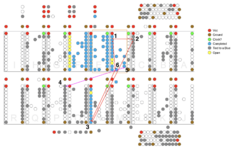MacOSMonkey
Well-known member
Looks good. Are the 2 new pins on the D device? Which 2 are they?

Still working?
Yep. It happens… we celebrate a victory for something we have spent a long time fixing and then the issue returns.2+ months later, the dreaded artifact issue is back. *sigh*
I don't know the organization. I'll think about it and/or try to find out. Spec/24 Series III was 24-bit acceleration. There were different transfer modes and programmable registers, etc., so there might be some splits. But, I mostly think it has to do with address space for the onboard RAM transfers. Anyway, I will look into it. There might be some software speed-ups for 8-bit...but 8-bit started in the original PDQ days, minimally. So, don't worry about 8-bit mode. There's no GAL split for 8 vs. 24-bit. In the first version, all the value and wow factor was in 24-bit acceleration.
